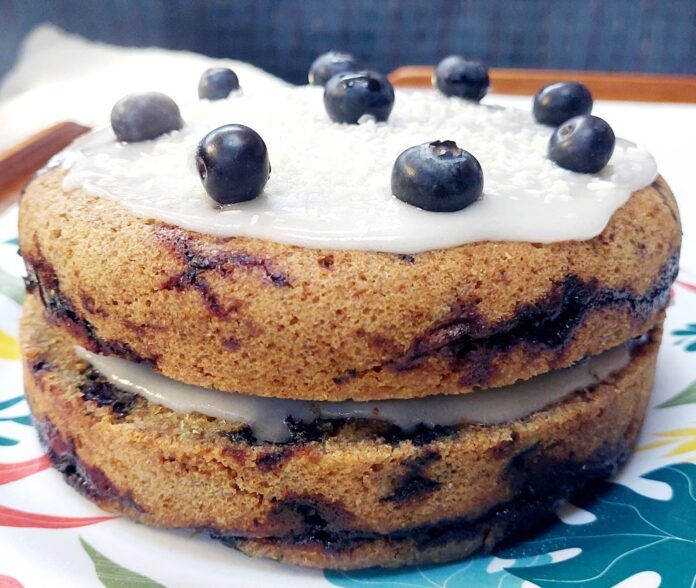
As any seasoned sailor knows, managing space and resources on a boat is paramount. This is especially true when it comes to storing and using fresh fruits and vegetables.
Sarah Powell-Fowler knows from decades of first-hand sailing experience just how crucial it can be to keep fruits and vegetables useable for as long as possible. She’s a full-time live-aboard cruiser, currently based in Lanzarote, Canary Islands. She has worked as a chef on various super yachts and is now the founder of Small Vegan Kitchen, a plant-based nutrition consultancy, specializing in helping cruisers implement greener, more sustainable galley operations. All her knowledge has come from experience gained in the galleys of her previous Halmatic 30 and current Sigma 41.
One of the keys to maintaining fresh fruits and vegetables onboard, says Sarah, is proper storage. She emphasizes the importance of keeping certain vegetables in dark, dry conditions. “Potatoes, sweet potatoes, and yams do best in paper bags stored in a cool, dark place,” she advises. “Avoid washing them beforehand; moisture can promote bacteria growth.”
Root vegetables. For optimal storage, Sarah recommends storing root vegetables under the main cabin table, especially since many sailors often dine outdoors in the cockpit, so they won’t get too knocked around and bruised.

Green veg. For broccoli and leafy greens, Sarah suggests washing the greens in a solution of water and apple cider vinegar (2 tbsp per 4 cups of water). She then dries them thoroughly before wrapping them in a paper towel or cloth to absorb excess moisture, and then storing them in an airtight container. “This technique can significantly extend their shelf life,” Sarah notes. Popped in the fridge, they can last for a couple of weeks.
Fruits. Fruits require careful attention, too. Sarah shares an easy trick for apples and bananas: “Keep them separate because bananas emit ethylene gas, which ripens other fruits faster.” For long-term storage, Sarah suggests drying apple slices in the sun for a day. “You can store the dried slices – thin slices are best – in a Tupperware container, ensuring they stay moisture-free,” she explains.
Sarah also uses hanging nets to store fruits like bananas but advises caution in sunny climates. “Make sure to place your fruit in shaded areas to avoid spoilage,” she says.
Tomatoes, zucchini, and peppers can also be dried for long-term storage. “Slice them thinly and dry them in the sun for up to 24 hours,” Sarah recommends. “This method allows you to create your own paprika by grinding dried peppers.” For tomatoes, she suggests combining dried tomatoes and peppers for a flavorful addition to dishes like pasta.
MULTIPLE WAYS OF PRESERVING

Preserving is your friend, when it comes to extending the shelf-life of vegetables. There are three methods to use:
- Brining (salt and water)
- Fermenting (think sauerkraut and kimchi)
- Using oil (great for grilled red paprika straight from the barbecue into a glass jar of olive oil)
As an example, garlic can be easily preserved in water and salt. “Peel the individual garlic bulbs and place them in a glass jar with water and a teaspoon of salt. This way you’ll have garlic for many months without it going off,” says Sarah.
Sarah also suggests buying mangoes and avocados when they’re unripe and hard. “Store them in the fridge, and then just get out as many as you need for the next couple of days and let them ripen outside,” says Sarah.
HOW TO BE CREATIVE WITH VEGETABLES

Once you have your fresh produce stored, the culinary possibilities are endless. “Get creative with your meals,” Sarah advises. “You can easily whip up a vegetable stew or a hearty soup with whatever you have on hand.”
Incorporating dried vegetables into your cooking can also add depth to flavors. Sarah recommends rehydrating them in water before use. “This not only saves space but also makes your meals more versatile,” she notes.
And don’t throw away those peels! “Lemon, orange, and grapefruit peels can be dried and rolled in coconut sugar for a delightful treat,” Sarah suggests. It’s a clever way to minimize waste and create something sweet. Or you can use the peel (pineapple with cinnamon, for example) to make a sweet and refreshing tea—hot or cold.
Also, vegetable scraps can be used in brining or fermenting. “You can take carrot peels and other leftover scraps, mix them with water and salt, and create your own kimchi,” Sarah recommends. This not only reduces waste but also introduces beneficial bacteria into your diet.
PRESSURE COOKERS: A BOAT-FRIENDLY SOLUTION

When it comes to cooking onboard, Sarah strongly advocates for the pressure cooker. “It’s a fantastic tool for quick, delicious meals that save both time and energy,” she enthuses. “They cook meals in a fraction of the time compared to traditional methods. You can even bake cakes in a pressure cooker (see recipe below), and it won’t dry out because of the moisture inside.”
Pressure cookers work by using a build-up of steam pressure to raise the temperature above boiling point and force liquid into ingredients. This reduces the time needed to cook the food. There are two main types on the market: a traditional stove-top pressure cooker and the newer electric pressure cookers, also known as Instapots.
“They’re safe for use at sea, mainly because of the sealed lid, and they use considerably less energy than conventional cooking,” says Sarah. “This can be particularly useful on the boat where we are always trying to be mindful of the energy we consume.”
Add to that the fact that a reduced cooking time can help preserve the food’s nutritional content, and this is certainly one piece of equipment worth adding to the shopping list.
THE CHOICE BETWEEN GAS OR ELECTRIC?
The debate between gas and electric cooking on boats can be contentious. Sarah leans towards electric cooking as a cleaner energy option, especially when paired with renewable energy sources like solar or wind power. “Electric cooking is safer, as it eliminates gas leaks and associated respiratory issues,” she explains. “Electric cooking is generally easier and requires less attention, freeing you up for other tasks,” Sarah notes. However, they can be slower to heat up, which may not be ideal in a hurry.
However, gas does have its advantages, particularly in terms of speed. “Gas heats up quicker, which can be a major time-saver and essential when cooking at sea,” she says. But Sarah also notes that boat ovens often don’t perform as well as traditional home ovens, leading to some frustration when trying to bake. There’s also the safety issue, especially in a confined space like a boat galley.
Ultimately, Sarah recommends choosing what’s right for you, based on your boat and your sailing habits. “If you’re frequently moving between marinas, an electric model is perfect,” she suggests. “For longer voyages, consider a gas option for more reliability. Or you could go for a hybrid approach and use a bit of both.”
INGREDIENTS: 1 ½ cups all-purpose flour ¾ cup sugar 1 teaspoon baking powder ½ teaspoon baking soda ¼ teaspoon salt Zest of 1 lemon 1 cup plant-based milk (such as almond milk or soy milk) 1/3 cup vegetable oil 1 tablespoon apple cider vinegar 1 teaspoon vanilla extract 1 cup blueberries METHOD: Sarah’s No Eggs, No Worries e-cookbook is launching soon. For more delicious and simple egg-free, plant-based recipes, you can pre-order a copy.
Pumpkins and butternut squash are a great staple that can be kept in a cool dry spot for many weeks and provides plenty of nutritional value.








































